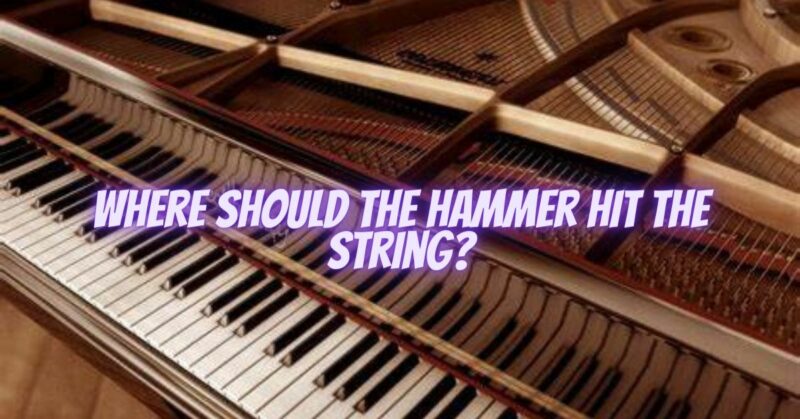The precise point at which the piano hammer strikes the string significantly affects the tone, volume, and overall quality of sound produced. Achieving the ideal contact point is crucial for obtaining a balanced and expressive piano tone. In this article, we will explore the concept of hammer string contact and provide insights into where the hammer should hit the string for optimal results.
Understanding Hammer String Contact: When a key is pressed, the piano action mechanism propels the hammer towards the string. The point of contact between the hammer and the string is crucial in determining the sound produced. The hammer should strike the string with the right amount of force and at the appropriate contact point to elicit the desired tone and volume.
Where Should the Hammer Hit the String? The hammer should strike the string slightly off-center, closer to the left side (bass side) than the right side (treble side). This is known as the “sweet spot” or “speaking length” of the string. The exact position varies depending on the specific piano design and string length. Generally, the hammer should hit the string approximately 1/8th to 1/4th of the string length from the left end.
Adjusting Hammer String Contact:
- Voicing: Voicing refers to the adjustment of the hammer’s density and shape to achieve the desired tone. An experienced piano technician can shape the hammer to ensure optimal string contact and tone. Voicing involves needling or filing the hammers to create a well-rounded and responsive striking surface.
- Hammer Blow Distance: The hammer blow distance refers to the distance the hammer travels from its resting position to strike the string. Proper hammer blow distance ensures accurate string contact and prevents the hammer from hitting too forcefully or too weakly. A piano technician can adjust the blow distance to achieve optimal string contact.
- Regulation: Regulation involves adjusting the various components of the piano action mechanism to ensure precise and consistent hammer string contact. A piano technician can regulate the key dip, aftertouch, and letoff to optimize the hammer’s striking position and response.
- Professional Assistance: For precise adjustments and fine-tuning of hammer string contact, it is advisable to seek professional assistance from a qualified piano technician. They possess the expertise, tools, and knowledge to assess the piano’s unique characteristics and make the necessary adjustments to achieve optimal string contact and tonal balance.
Conclusion: The point at which the piano hammer strikes the string is critical in producing a balanced, expressive, and resonant tone. Understanding the concept of hammer string contact and the preferred contact point guides adjustments such as voicing, hammer blow distance, and regulation. Seeking the expertise of a professional piano technician is recommended to ensure accurate adjustments and optimal results. With the right hammer string contact, you can unlock the full musical potential of your piano and enjoy a rich and beautiful tone.


